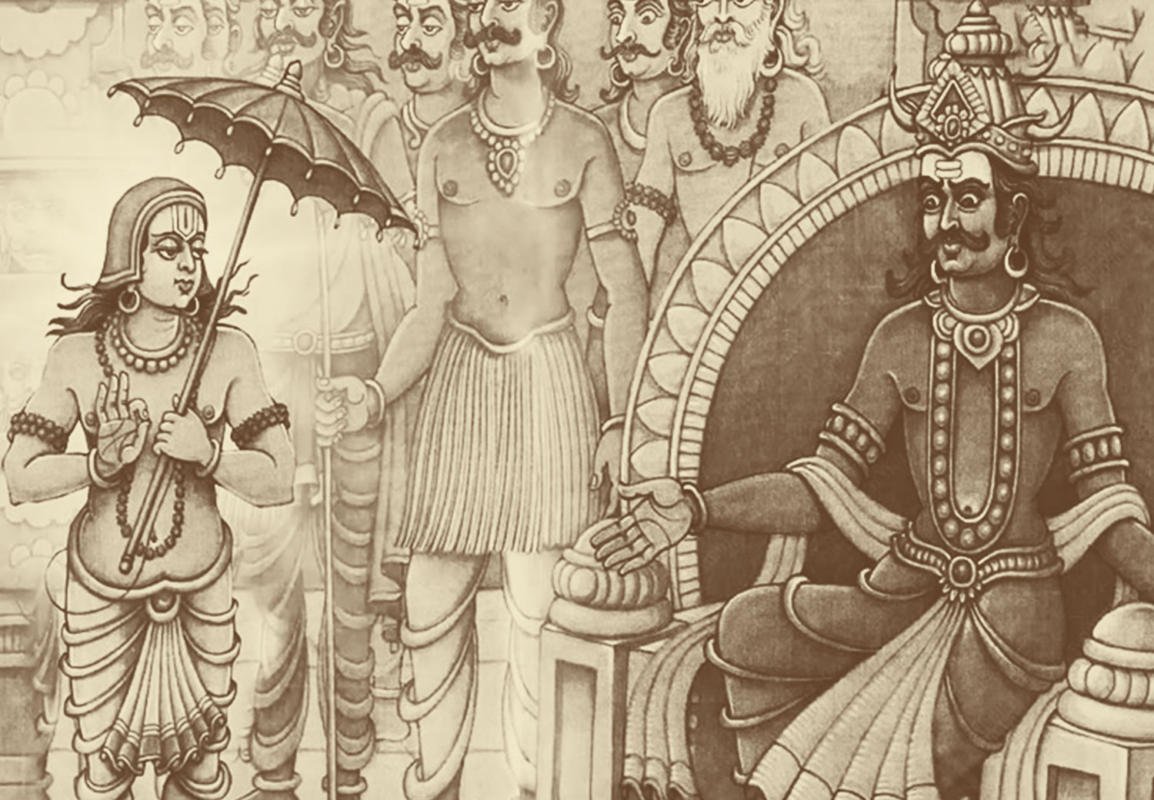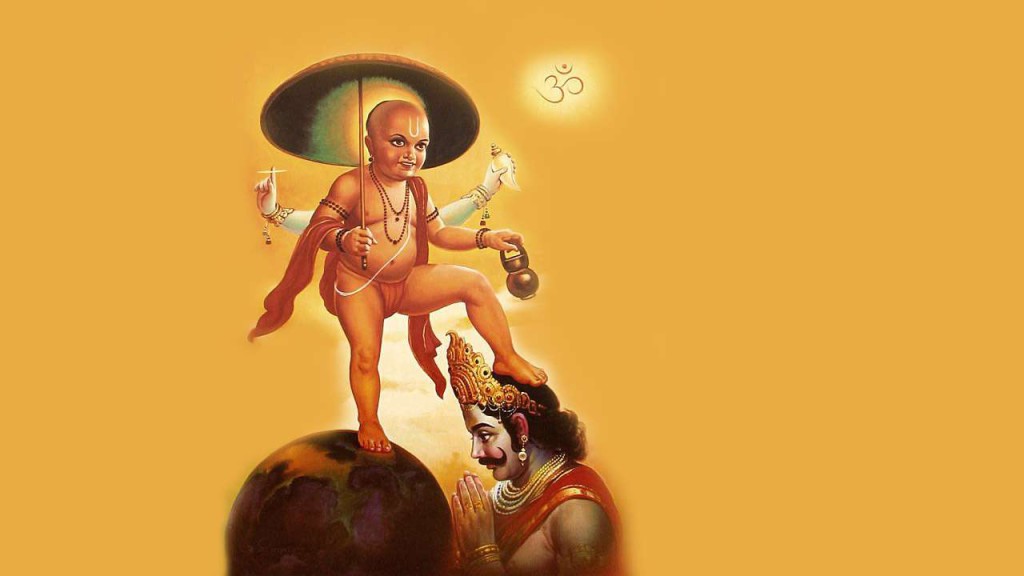In Hindu mythology, Lord Vishnu is known for his ten principal avatars, called the Dashavatara. These avatars incarnate on Earth to restore cosmic order and righteousness. The fifth avatar, Vamana avatar, is unique and intriguing because Vishnu assumes the form of a dwarf Brahmin to subdue a powerful demon king.
Table of Contents
Story of King Bali
During the Treta Yuga, there was a demon king named Bali, the grandson of Prahlada. Prahlada was a devout follower of Lord Vishnu, and his devotion earned him Vishnu’s protection and blessings. Bali, inheriting the virtues of his grandfather, was known for his strength, devotion, and righteousness. He performed a great penance and pleased Lord Brahma, who granted him immense power. With this boon, Bali became the ruler of all three worlds, dethroning Indra, the king of the gods.
The Advent of Vamana
The gods, distressed by their defeat and the growing power of Bali, sought help from Lord Vishnu. They prayed to Vishnu to intervene and restore the balance of power in the universe. In response to their prayers, Vishnu assured them that he would restore their dominion. Vishnu chose to incarnate as Vamana, a dwarf Brahmin, the son of Sage Kashyapa and Aditi. Vamana Avatar is often depicted as a short-statured Brahmin, holding a staff and an umbrella.
Read our another article to know more about the fourth incarnation of lord vishnu
Birth and Childhood of Vamana Avatar
Aditi, the mother of the gods, prayed fervently to Vishnu to protect her children from the dominance of Bali. Pleased with her devotion, Vishnu promised to be born as her son. Thus, Vamana was born to Sage Kashyapa and Aditi. From a young age, Vamana displayed extraordinary wisdom and divine qualities. Despite his small stature, his presence exuded a divine aura.
The Encounter with Bali

King Bali, in his quest for ultimate power, decided to perform the Ashwamedha Yajna (a horse sacrifice ritual). This ritual was a demonstration of his supremacy and an attempt to consolidate his power. During this yajna, Vamana appeared as a humble Brahmin boy and approached Bali. The demon king, known for his generosity and magnanimity, welcomed Vamana and offered him any gift he wished for.
The Three Paces of Land
Vamana Avatar asked for a simple boon – three paces of land. Bali, amused by this modest request and confident in his power, agreed and instructed Vamana to measure out the land. Suddenly, Vamana began to grow in size, transforming into a giant form that spanned the universe. With his first step, he covered the entire Earth, and with the second step, he covered the heavens. There was no space left for the third step.
The Subjugation of Bali

Realizing that Vamana was none other than Lord Vishnu, Bali understood the divine play at work. Recognizing his limitations and the greatness of Vishnu, Bali humbly offered his own head for the third step. Vamana placed his foot on Bali’s head and pushed him down to the netherworld (Patala). This act demonstrated Bali’s humility and devotion, even in the face of divine intervention. However, due to Bali’s unwavering devotion and righteousness, Vishnu granted him the boon to rule Patala and allowed him to visit Earth once a year to see his people. This visit is celebrated as the festival of Onam in Kerala.
The Symbolism and Lessons
The Vamana avatar signifies the triumph of dharma (righteousness) over adharma (unrighteousness). It teaches us the importance of humility, devotion, and the ultimate surrender to the divine will. Lord Vishnu, in his Vamana form, demonstrated that true power lies not in physical strength but in righteousness and devotion. The story also highlights the transient nature of power and the need for humility, even for the most powerful beings.
Legacy and Worship
Vamana Avatar is revered as a symbol of humility and divine wisdom. Temples dedicated to Vamana can be found in various parts of India, with significant ones in Kerala and Uttar Pradesh. The Vamana Purana, one of the eighteen Mahapuranas, elaborates on the story of Vamana Avatar and his deeds. The festival of Onam, celebrated with great fervor in Kerala, honors the annual visit of King Bali to his people, symbolizing the eternal bond between the devoted king and his subjects.







